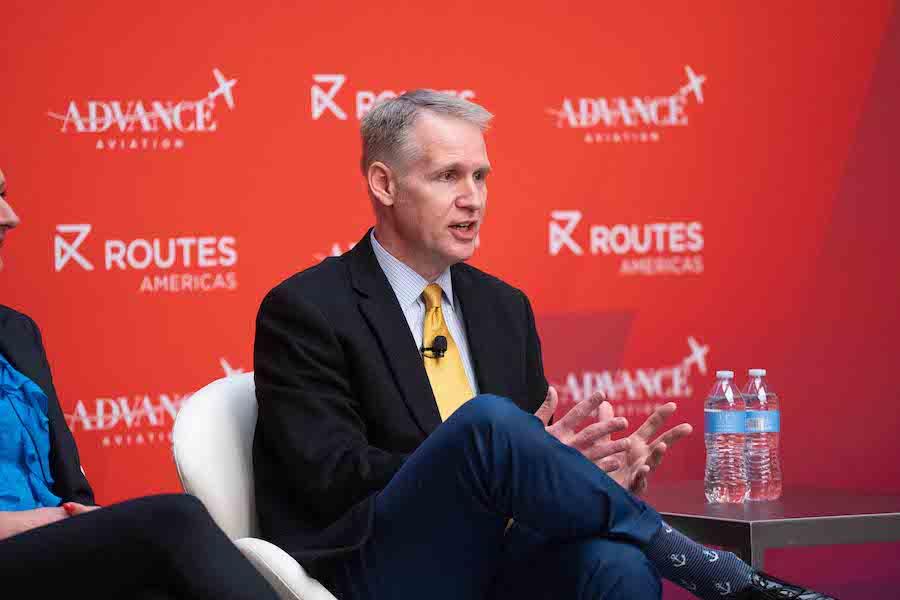American Eyes Multi Uses Of Airbus XLR; Leverages BA Partnership In Transatlantic

Jason Reisinger, American Airlines' managing director of global network planning, speaking at Routes Americas 2023.
CHICAGO—The extra-long-range Airbus A321XLR will be a big game-changer for American Airlines that will add significant flexibility to its network strategy and how the oneworld global alliance carrier can most efficiently serve thinner long-haul routes.
Speaking on a Routes Americas 2023 panel focused on the transatlantic market, Jason Reisinger, American Airlines' managing director of global network planning, said the multifaceted XLR was the aircraft equivalent of the Swiss Army Knife tool.
“Where we used to have to fit square pegs into round holes, I will have round pegs to fit round holes,” he said.
American, a long-time and large operator of the A321 and A321LR, has an order for 50 XLRs. With a range of 4,700 nm—or 11 hr.—the XLR, which is scheduled to enter service in the first half of 2024, brings narrowbody economics to routes more typically served by widebodies.
Reisinger cited some examples in the transatlantic market where that versatility could be deployed, including from major U.S. hubs such as Chicago O’Hare (ORD) to smaller cities in Europe. Conversely, it could serve a route such as from a smaller U.S. city, like Raleigh, North Carolina, to London Heathrow (LHR), home to American’s transatlantic joint-venture partner British Airways (BA).
“American likes the A321 and we can do a number of things with the XLR, including serving routes that cannot support a 787 but where we still have a nice onboard product,” he said.
For the 2023 summer season, where demand for transatlantic travel is high, American is leveraging that JV with BA. Reisinger explained that because of the effects of the pandemic, American is still down by 52 aircraft this year compared with its 2019 fleet. American has therefore increased transatlantic capacity by adding flights to London from where passengers can continue to other European destinations on partner airlines if American does not serve the route directly.
“My friends at BA have a hub in London; we have 26 flights to London this summer. Unfortunately, we can’t fly everything ourselves, so it’s nice to have friends,” he said.
Reisinger also said that he did not see an end to the current “really robust demand.”
“This is really the first full year without any COVID restrictions, so that may be part of the reason, and I wish I could say exactly why demand is as high as it is, but I can’t,” he said.
Looking ahead, he said he could not see anything that would disrupt that demand.
“It makes me nervous to say that, looking at what has happened over the past four years, but right now I don’t see anything to slow demand. People are buying tickets.”
Reisinger also spoke to what most incentivizes American to launch a new city, particularly on a long-haul route such as Austin, Texas-London, which he said is a “huge commitment.”
An airport might offer a $1 million package as an incentive, but Reisinger pointed out that each wheels-up with a widebody means spending $250,000. “So we could burn through that $1 million in four days,” he said.
“Keep that in mind and take a more holistic approach where you get communities, cities, state, even a region, for a bigger picture. They have invested interests and they want it to work. If I see a community that is really well-organized and will work to make it happen, then that’s something we will pay attention to.”
Stay up to date with the latest news from Routes Americas 2023.
